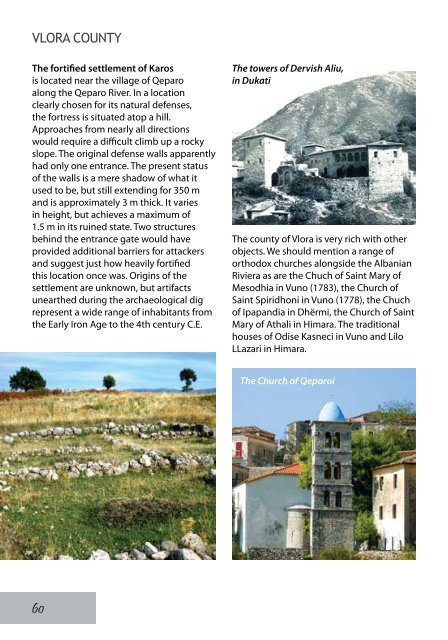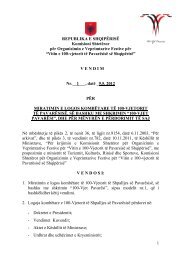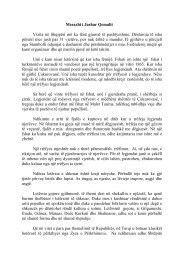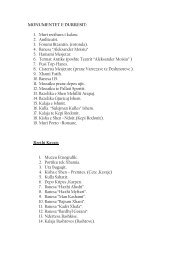Albanian Cultural Heritage
Albanian Cultural Heritage
Albanian Cultural Heritage
Create successful ePaper yourself
Turn your PDF publications into a flip-book with our unique Google optimized e-Paper software.
VLORA COUNTY<br />
The fortified settlement of Karos<br />
is located near the village of Qeparo<br />
along the Qeparo River. In a location<br />
clearly chosen for its natural defenses,<br />
the fortress is situated atop a hill.<br />
Approaches from nearly all directions<br />
would require a difficult climb up a rocky<br />
slope. The original defense walls apparently<br />
had only one entrance. The present status<br />
of the walls is a mere shadow of what it<br />
used to be, but still extending for 350 m<br />
and is approximately 3 m thick. It varies<br />
in height, but achieves a maximum of<br />
1.5 m in its ruined state. Two structures<br />
behind the entrance gate would have<br />
provided additional barriers for attackers<br />
and suggest just how heavily fortified<br />
this location once was. Origins of the<br />
settlement are unknown, but artifacts<br />
unearthed during the archaeological dig<br />
represent a wide range of inhabitants from<br />
the Early Iron Age to the 4th century C.E.<br />
60<br />
The towers of Dervish Aliu,<br />
in Dukati<br />
The county of Vlora is very rich with other<br />
objects. We should mention a range of<br />
orthodox churches alongside the <strong>Albanian</strong><br />
Riviera as are the Chuch of Saint Mary of<br />
Mesodhia in Vuno (1783), the Church of<br />
Saint Spiridhoni in Vuno (1778), the Chuch<br />
of Ipapandia in Dhërmi, the Church of Saint<br />
Mary of Athali in Himara. The traditional<br />
houses of Odise Kasneci in Vuno and Lilo<br />
LLazari in Himara.<br />
The Church of Qeparoi








